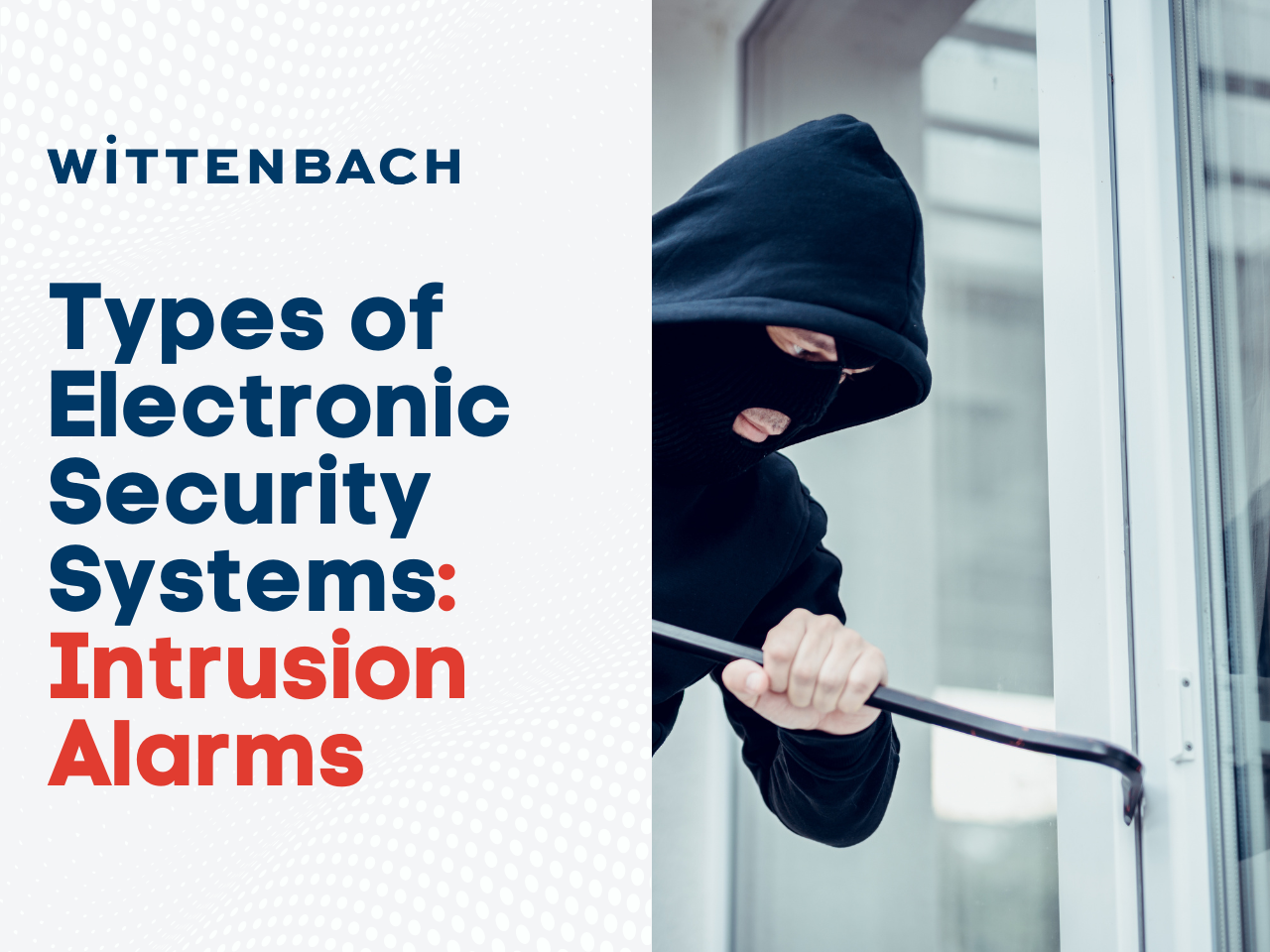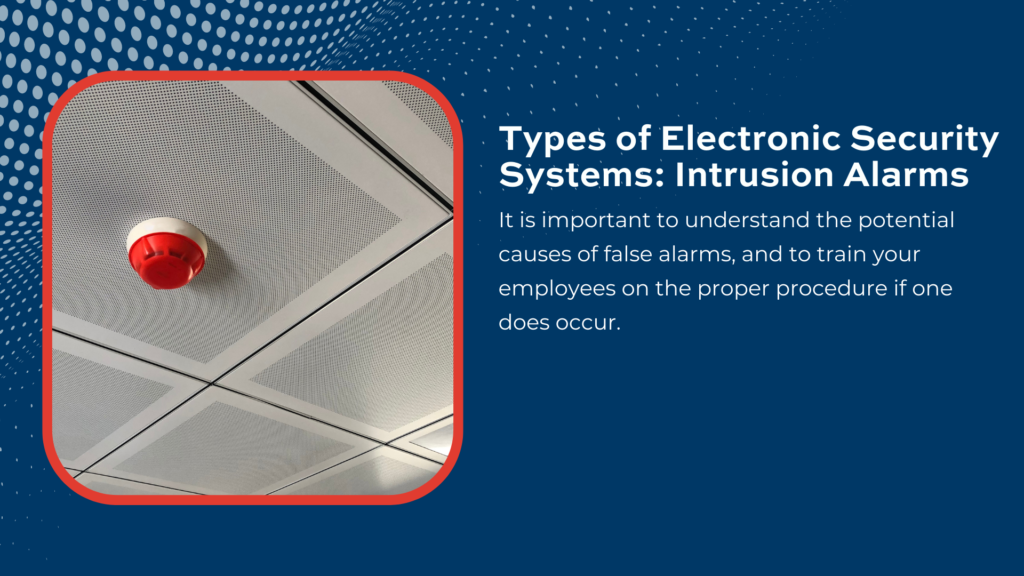Electronic and physical security are of critical importance to protecting branch employees, as well as the clients who enter your doors to transact. Remote security solutions, such as intrusion alarms, naturally deter would-be criminals from breaking in. If the alarm is triggered, it also can draw attention to your building and even alert authorities. Below, we will explain the purpose and components of intrusion alarms, the various configurations available, and best practices to prevent false alarms in your branch.
Purpose of intrusion alarms
Intrusion alarms are a relevant, effective means of security for any organization that requires a more thorough level of protection. While extremely useful in the financial sector for branch security, they can also be used in hospitals, factories, warehouses, schools and campuses, retail settings, and more—protecting employees, clients and assets from intruders both during and outside of normal operating hours.
Silva Consultants explains the foundations of an intrusion alarm system: “Intrusion alarm systems are designed to detect unauthorized entry into a building or outdoor area. The goals of an intrusion alarm system can be to warn occupants of an intrusion, scare aware the intruder, notify the appropriate authorities that a break-in is occurring, or some combination of all of these.”
Main components of intrusion alarms include detection devices, contact switches, motion sensors, glass breakage detectors, audible signaling devices (e.g. sirens or other noisemakers to draw attention and deter the criminal), arming stations, and control equipment.
An annual FBI report on banking industry-related intrusions tracks the frequency of intrusions across the U.S. In 2021, there were 1,964 total reported intrusions in the form of robberies and burglaries. The most frequent intrusions fell the branch offices of metropolitan areas. Virtually all of the impacted branches had security cameras, but only 89% used an intrusion alarm; a statistic which could have possibly deterred some of the incidents.
Types of intrusion alarms
Understanding the different configurations of intrusion alarms will help your financial institution or business decide upon the best fit for you.
- Hardwired vs. Wireless: Hardwired intrusion alarms are the traditional means of securing a facility, with physical wires running through your building that typically costs less than a wireless model, but requires a significant lift for installation. Safewise explains that a wireless alarm “uses sensors that communicate with the control panel using radio frequency technology,” and that the control panel communicates with the monitoring center via a cellular connection. Wireless intrusion alarms are the more modern option, as they are easier to install and upgrade as technology improves, also requiring less impact to your building structure in the event of a renovation project.
- Unmonitored vs. Monitored: When triggered by an intruder, an unmonitored alarm simply activates a loud noise or siren to deter the criminal from the property, with no further repercussion of the action. A monitored intrusion alarm connects to a third party, who will then alert you of the breach and confirm whether it was a true or false alarm. They will also contact first responders, if they are needed to defuse the situation or apprehend a potential criminal.
- Electric current alarm system: Perhaps the most low-tech of the types of intrusion alarms, “…in that they only monitor entry points like doors and windows […] With these systems, a low-voltage electrical circuit flows between two points. If doors and/or windows are shut, the current flows easily. But, if they are opened, the circuit is disrupted, and an audible beep is triggered.”
Preventing false alarms
With any intrusion alarm system comes the responsibility to prevent false alarms. It is important to understand the potential causes of false alarms, and to train your employees on the proper procedure if one does occur. Since monitored intrusion alarms could alert first responders, preventing or identifying a false alarm will ensure that those emergency services will be used where only truly needed. Best practices to prevent false alarms include:
- Understanding the intrusion alarm’s sensitivity threshold, as well as any flaws or vulnerabilities in your building that may trigger the alarm prematurely. This will help to prevent false alarms from weather and street vibrations that impact your building’s surrounding area.
- Completing routine, manufacturer-prescribed maintenance on the alarm system such as battery changes, any software updates, and keeping your branch surroundings clear of hazards. In addition to maintaining the alarm, maintaining your branch or business’ building structure, such as walls and window frames, will ensure that the system triggers only in the event of a true breach.
- Regularly testing all components of the intrusion alarm for functionality and accuracy. Bay Alarm recommends testing monthly, as well as when any changes are made to the system, to ensure they work as designed. This includes testing the siren, motion sensors, a panic button, any security cameras, and making sure that the system arms and disarms when instructed to.
Intrusion alarms and services recommended by Wittenbach
- Alarm monitoring with Security Central: Wittenbach experts have partnered with Security Central to provide burglar alarm monitoring, video verification, and other custom business solutions. Available around the clock, the Security Central operators undergo extensive training and background checks to ensure they are trustworthy, dependable, and qualified to respond correctly in the event of any suspected breach.
- DMP control panels and virtual keypad: DMP control panels provide integrated intrusion and access control in the same intuitive system. In a recent blog post, we discussed all of the features of the Virtual Keypad, which allows for remote, user-based locking and unlocking of buildings as well as audit reports of approved and denied access.
- Visual alarm monitoring with Chekt: Another monitoring partner is Chekt, who summarizes their services: “Remote video monitoring is an essential security service for many customers. Instant live video sent to the alarm monitoring center when unauthorized access is detected has tremendous value in protecting property. With the accuracy of alarm systems, video analytics, AI, and video quality in low-light situations, cameras give agents the visual situational awareness needed to be proactive for securing a customer’s property.”
In summary
The processes of selecting, installing, testing, and maintaining an intrusion alarm system all hold equal importance when protecting your branch or business. Carefully executing each step helps you to ensure the correct function of your alarm system in the event of an emergency, and also to quickly act if a false alarm occurs. If your business is ready for a new alarm system, or is seeking continuous monitoring to relieve your IT and security staff, contact Wittenbach to learn more about the products and services that would best outfit your footprint.





